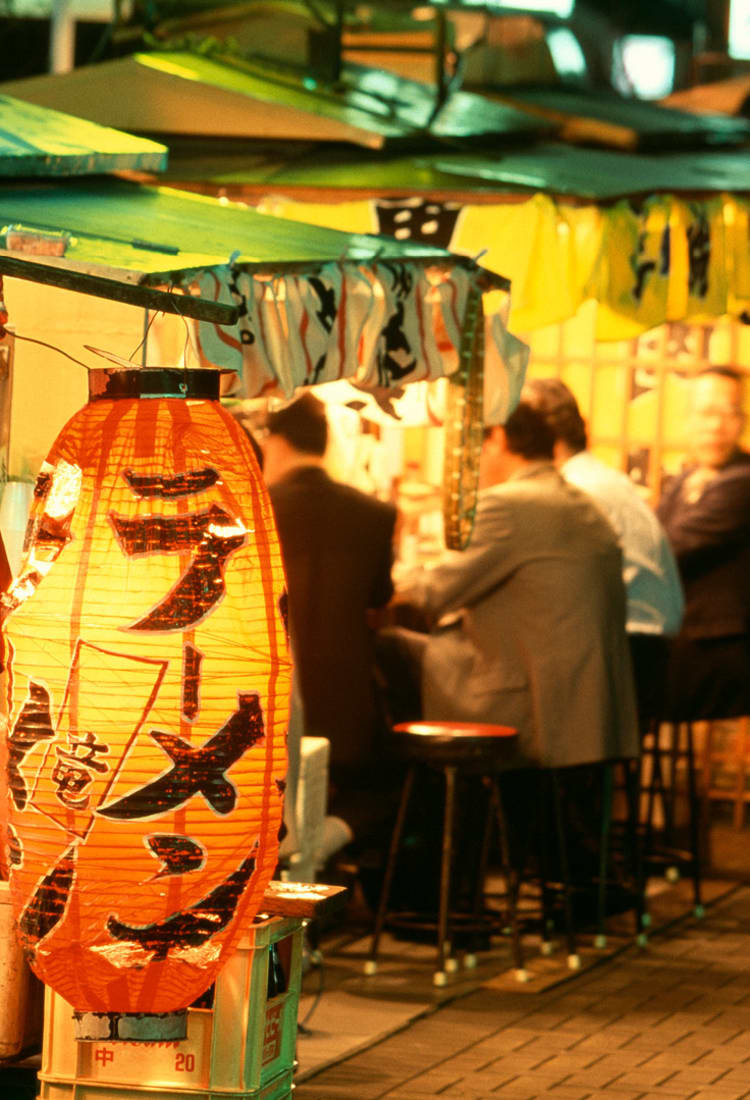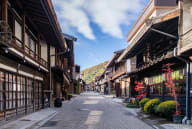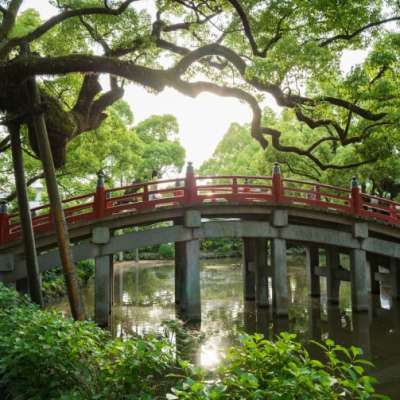
Fukuoka Where unique ingredients meet the culinary magic
A Culinary Journey in Fukuoka
Fukuoka, located on the northern shore of the Kyushu region, is a vibrant city known for its rich history, bustling urban centres, and impressive culinary scene. With its temperate climate and fertile land, Fukuoka has become a prominent agricultural hub, producing a variety of high-quality fruits and vegetables.
Fukuoka is celebrated for its abundant agricultural produce, forestry products, and seafood. The fertile plains and temperate climate yield a variety of crops, including strawberries, rice, and vegetables. Fukuoka's coastal waters are rich in seafood, such as cod, whose roe is used to make the spicy Mentaiko, and squid – both integral to the local cuisine. The prefecture is particularly famous for its Tonkotsu ramen, a hearty noodle dish with rich, creamy pork bone broth, thin noodles, and various toppings. Another local specialty is Mizutaki, a comforting chicken hot pot that showcases Fukuoka's high-quality poultry.
Fukuoka is known for its vibrant food markets, such as Yanagibashi Rengo Market, where fresh local produce and seafood are sold daily. Fukuoka's culinary scene is also defined by its Yatai (street food stalls), which offer an array of delicious dishes in a lively, communal atmosphere. From discovering the historic charm of Dazaifu Tenmangu Shrine to marvelling at the natural wonders of Senbutsu Stalactite Cave, Fukuoka's vibrant culinary scene will ensure you stay well-fed and thoroughly satisfied while exploring these captivating sights.
Savour the flavours of Fukuoka and discover the heart of Kyushu through its exceptional cuisine and welcoming hospitality.
Tonkotsu ramen (Pork-bone ramen)

What it is (ingredients)
Tonkotsu ramen is a rich and creamy noodle soup originating from Fukuoka. The hallmark of this dish is its milky white broth, made by simmering pork bones for several hours to extract their deep flavour and collagen. The soup is typically served with thin, firm noodles and topped with slices of tender Chashu (braised pork belly), green onions, pickled ginger, and sometimes a soft-boiled egg. Additional toppings can include wood ear mushrooms, nori, and sesame seeds, enhancing the ramen's flavour and texture.
History/Origin
Tonkotsu ramen was first developed in the 1940s in Fukuoka, a bustling area known for its vibrant food culture. Fukuoka's Tonkotsu ramen is often called "Hakata ramen"- referring to Fukuoka city’s second moniker – though it is by no means limited to just this area. Although there are differences from one shop to another, such as the thickness of the noodles or the ingredients, the essential ramen features a milky white broth made primarily from pork bones. Over time, Hakata-style Tonkotsu ramen became synonymous with Fukuoka, attracting food enthusiasts from across Japan and around the world. Today, Fukuoka is acknowledged as the birthplace of Tonkotsu ramen, with countless ramen shops perfecting their own versions of this iconic dish.
Where You Can Eat
Tonkotsu ramen can be savoured at numerous ramen shops and street stalls throughout Fukuoka. The city is renowned for its Yatai food stalls, which offer an authentic and immersive dining experience. From small, family-run establishments to famous ramen chains, Fukuoka provides diverse options for enjoying this beloved dish.
When to Eat
This hearty ramen is ideal for any time of the year, providing warmth on a cold day or a fulfilling meal after exploring the city. Its rich, savoury broth makes it a comforting choice for lunch or dinner, and its popularity ensures that you'll find it readily available throughout Fukuoka.
Dive into a bowl of Tonkotsu ramen and experience the deep, satisfying flavours that have made it a culinary treasure of Fukuoka!
Motsu-nabe (Hotpot with offal)

What it is (ingredients)
Motsu-nabe (Nabe means pot) is a nourishing hotpot dish from Fukuoka, featuring a variety of offal (Motsu), typically beef intestines are used for Motsu-nabe. The hotpot is filled with a rich broth made from soy sauce, miso, or garlic, and is packed with vegetables like cabbage, garlic chives, and tofu. The combination of offal and vegetables creates a unique and robust flavour that is both comforting and nutritious. Additionally, it's heavy in amino acids and collagen, which are beneficial for the skin.
History/Origin
Motsu-nabe originated in Fukuoka during the post-war period when food scarcity led people to make the most of every part of the animal. The dish quickly gained popularity due to both its affordability, and the nutritional value of the offal, which is rich in vitamins and minerals. Over time, Motsu-nabe became a beloved local specialty, with many restaurants in Fukuoka perfecting their own recipes and adding unique twists to the traditional preparation.
Where You Can Eat
You can find Motsu-nabe in many specialized restaurants throughout Fukuoka, especially in the bustling Hakata district. These establishments often serve the hotpot in a communal setting, allowing diners to cook and enjoy the meal together. Motsu-nabe can also be found in Izakaya (Japanese-style dining bars) and other traditional Japanese restaurants across the city, each offering a distinct take on this classic dish.
When to Eat
Motsu-nabe is particularly popular during the colder months when its warming properties are most appreciated. However, it is enjoyed year-round by those who crave its rich, piquant flavours. The hotpot is perfect for gatherings with family and friends, providing a communal dining experience that brings people together.
Savour the rich, hearty taste of Motsu-nabe and discover why it's a beloved dish in Fukuoka's culinary landscape!
Mentaiko (Spicy cod roe)

What it is (ingredients)Mentaiko, a signature dish of Fukuoka, features cod roe that is cured with red chilli peppers, and salt. The dish is carefully prepared to balance the spicy heat with the natural brininess of the fish roe. Variations may include different levels of spiciness, from mild to extremely hot, catering to various palates. It is commonly enjoyed as a side dish, a topping for rice or noodles, incorporated with vegetables, or even mixed into pasta for a unique fusion experience.
History/Origin
Mentaiko originates from Korea, and its name is also derived from Korean. Its history in Japan began when a food company in Hakata, Fukuoka, first produced Mentaiko. The dish gained nationwide fame in the 1970’s, after the Sanyo Shinkansen line was extended to reach Fukuoka.
Where You Can Eat
You can find Mentaiko throughout Fukuoka Prefecture, from local fish markets and specialty stores to Izakaya (Japanese-style dining bar) and traditional restaurants. It's a staple in many Fukuoka eateries, showcasing its popularity and integration into daily dining experiences across the prefecture.
When to Eat
The best time to indulge in Mentaiko is during the winter months when the roe is in peak season and flavour. It serves excellently as a satisfying lunch paired with steamed rice or as a zesty appetizer during evening gatherings with friends and family.
Mentaiko offers a culinary adventure that combines rich history with bold flavours, making it a must-try for spice aficionados and food enthusiasts alike.































































